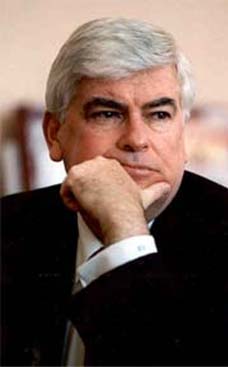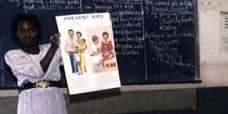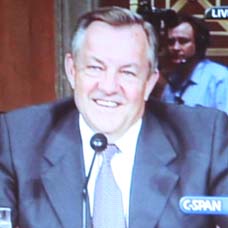2006.10.05: October 5, 2006: Headlines: COS - Kyrgyzstan: Fishing: Department of State: Peace Corps Project Helps Expand Fishing Industry in Kyrgyzstan
Peace Corps Online:
Directory:
Kyrgyzstan:
Peace Corps Kyrgyzstan :
The Peace Corps in Kyrgyzstan:
2006.10.05: October 5, 2006: Headlines: COS - Kyrgyzstan: Fishing: Department of State: Peace Corps Project Helps Expand Fishing Industry in Kyrgyzstan
Peace Corps Project Helps Expand Fishing Industry in Kyrgyzstan
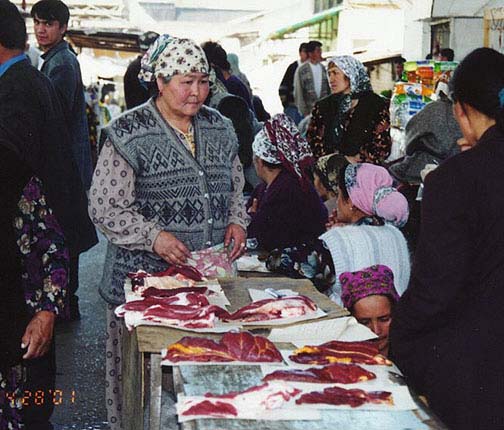
After much study, the owner of Oasis Site and a group of farmers in the region concluded that constructing a fish farm was the answer. The farm would host regular sessions where experts and local residents could meet and learn how fish farms are constructed, maintained and managed to reach sustainable profitability. Unfortunately, the group did not have the funds to build such a farm. To resolve the problem, the Oasis owner and a local professor took their concern to a Peace Corps volunteer serving in the area. Through the Peace Corps Partnership Program, which collaborates with individuals across America and facilitates their donations to specific community development projects, funds were raised to build the fish farm and buy fish to fill it.
Peace Corps Project Helps Expand Fishing Industry in Kyrgyzstan
Peace Corps Project Helps Expand Fishing Industry in Kyrgyzstan
Partnership for a Better Life
Since the end of Communist rule, Kyrgyzstan has faced many economic problems. The Issyk-Kul region, comprising 20 small villages and three towns, is one example of a group of neighboring communities where food and money are scarce.
The main source of income in this area is seasonal tourism and agriculture. Unfortunately, because of a lack of a trained labor force, the depletion of natural resources and weak direct foreign investment, the area had failed to produce the income citizens needed for basic living expenses.
In 1999 the U.S.-Israeli-Kyrgyz MASHAV Agri-Business Consulting Program was established to address the agricultural side of the region's income problem. The program led to the construction of a greenhouse at the Oasis Agricultural Site where agricultural producers in the region receive both formal and one-on-one training from agricultural experts.
With many farmers having learned about the benefits of greenhouse cultivation and with the greenhouse's production well established, the community looked to increase food production in another area.
Within Issyk-Kul the lake fish population nearly had been depleted, causing a significant decline in the traditional fishing industry. The resulting loss of jobs led to more poverty.
After much study, the owner of Oasis Site and a group of farmers in the region concluded that constructing a fish farm was the answer. The farm would host regular sessions where experts and local residents could meet and learn how fish farms are constructed, maintained and managed to reach sustainable profitability. Unfortunately, the group did not have the funds to build such a farm.
To resolve the problem, the Oasis owner and a local professor took their concern to a Peace Corps volunteer serving in the area. Through the Peace Corps Partnership Program, which collaborates with individuals across America and facilitates their donations to specific community development projects, funds were raised to build the fish farm and buy fish to fill it.
The construction of this fish farm at Oasis will not only provide more jobs for residents of the Issyk-Kul area, but it also will provide the necessary training in how to develop and manage a profitable fishing industry and avoid depleting fish stocks in the future. Local college students and teachers also plan to go to the farm to help with hands-on training for farmers.
As the adage goes: If you give a man a fish, he will eat for a day. If you teach a man to fish, he will eat for a lifetime. In teaching many in Issyk-Kul to farm fish, Peace Corps has enhanced this region's ability to boost its income and pull people out of poverty.
(Distributed by the Bureau of International Information Programs, U.S. Department of State. Web site: http://usinfo.state.gov)
Links to Related Topics (Tags):
Headlines: October, 2006; Peace Corps Kyrgyzstan; Directory of Kyrgyzstan RPCVs; Messages and Announcements for Kyrgyzstan RPCVs; Fishing
When this story was posted in February 2007, this was on the front page of PCOL:





Peace Corps Online The Independent News Forum serving Returned Peace Corps Volunteers
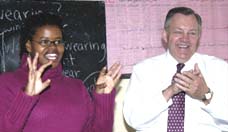 | Ron Tschetter in Morocco and Jordan
On his first official trip since being confirmed as Peace Corps Director, Ron Tschetter (shown at left with PCV Tia Tucker) is on a ten day trip to Morocco and Jordan. Traveling with his wife (Both are RPCVs.), Tschetter met with volunteers in Morocco working in environment, youth development, health, and small business development. He began his trip to Jordan by meeting with His Majesty King Abdullah II and Her Majesty Queen Rania Al Abdullah and discussed expanding the program there in the near future. |
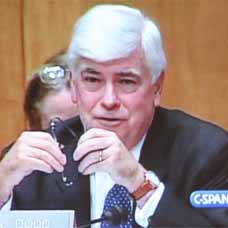 | Chris Dodd's Vision for the Peace Corps
Senator Chris Dodd (RPCV Dominican Republic) spoke at the ceremony for this year's Shriver Award and elaborated on issues he raised at Ron Tschetter's hearings. Dodd plans to introduce legislation that may include: setting aside a portion of Peace Corps' budget as seed money for demonstration projects and third goal activities (after adjusting the annual budget upward to accommodate the added expense), more volunteer input into Peace Corps operations, removing medical, healthcare and tax impediments that discourage older volunteers, providing more transparency in the medical screening and appeals process, a more comprehensive health safety net for recently-returned volunteers, and authorizing volunteers to accept, under certain circumstances, private donations to support their development projects. He plans to circulate draft legislation for review to members of the Peace Corps community and welcomes RPCV comments. |
 | He served with honor
One year ago, Staff Sgt. Robert J. Paul (RPCV Kenya) carried on an ongoing dialog on this website on the military and the peace corps and his role as a member of a Civil Affairs Team in Iraq and Afghanistan. We have just received a report that Sargeant Paul has been killed by a car bomb in Kabul. Words cannot express our feeling of loss for this tremendous injury to the entire RPCV community. Most of us didn't know him personally but we knew him from his words. Our thoughts go out to his family and friends. He was one of ours and he served with honor. |
 | Peace Corps' Screening and Medical Clearance
The purpose of Peace Corps' screening and medical clearance process is to ensure safe accommodation for applicants and minimize undue risk exposure for volunteers to allow PCVS to complete their service without compromising their entry health status. To further these goals, PCOL has obtained a copy of the Peace Corps Screening Guidelines Manual through the Freedom of Information Act (FOIA) and has posted it in the "Peace Corps Library." Applicants and Medical Professionals (especially those who have already served as volunteers) are urged to review the guidelines and leave their comments and suggestions. Then read the story of one RPCV's journey through medical screening and his suggestions for changes to the process. |
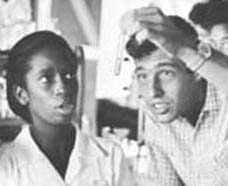 | The Peace Corps is "fashionable" again
The LA Times says that "the Peace Corps is booming again and "It's hard to know exactly what's behind the resurgence." PCOL Comment: Since the founding of the Peace Corps 45 years ago, Americans have answered Kennedy's call: "Ask not what your country can do for you--ask what you can do for your country. My fellow citizens of the world: ask not what America will do for you, but what together we can do for the freedom of man." Over 182,000 have served. Another 200,000 have applied and been unable to serve because of lack of Congressional funding. The Peace Corps has never gone out of fashion. It's Congress that hasn't been keeping pace. |
 | PCOL readership increases 100%
Monthly readership on "Peace Corps Online" has increased in the past twelve months to 350,000 visitors - over eleven thousand every day - a 100% increase since this time last year. Thanks again, RPCVs and Friends of the Peace Corps, for making PCOL your source of information for the Peace Corps community. And thanks for supporting the Peace Corps Library and History of the Peace Corps. Stay tuned, the best is yet to come. |
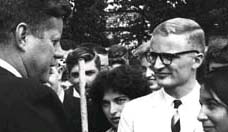 | History of the Peace Corps
PCOL is proud to announce that Phase One of the "History of the Peace Corps" is now available online. This installment includes over 5,000 pages of primary source documents from the archives of the Peace Corps including every issue of "Peace Corps News," "Peace Corps Times," "Peace Corps Volunteer," "Action Update," and every annual report of the Peace Corps to Congress since 1961. "Ask Not" is an ongoing project. Read how you can help. |
Read the stories and leave your comments.

Some postings on Peace Corps Online are provided to the individual members of this group without permission of the copyright owner for the non-profit purposes of criticism, comment, education, scholarship, and research under the "Fair Use" provisions of U.S. Government copyright laws and they may not be distributed further without permission of the copyright owner. Peace Corps Online does not vouch for the accuracy of the content of the postings, which is the sole responsibility of the copyright holder.
Story Source: Department of State
This story has been posted in the following forums: : Headlines; COS - Kyrgyzstan; Fishing
PCOL34683
33








